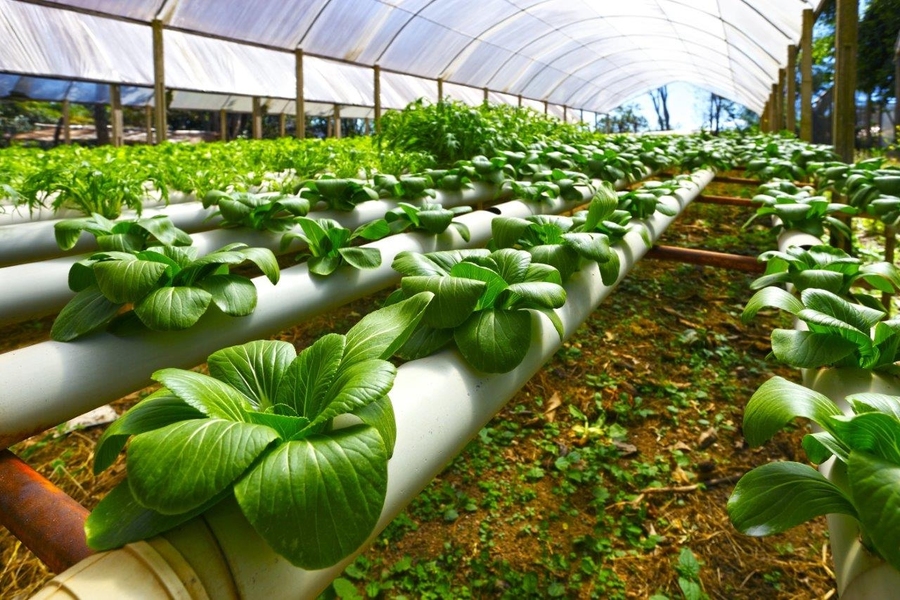Enhance Agricultural Efficiency With High-Quality Water Soluble Polymers
In the realm of modern agricultural techniques, the combination of top notch water-soluble polymers has arised as an encouraging opportunity to improve productivity and sustainability. These polymers use a range of benefits that can revolutionize traditional farming techniques, from boosting water retention and performance to optimizing dirt structure and nutrient shipment systems. By using the power of cutting-edge polymer services, farmers can potentially unlock brand-new pathways towards attaining higher crop yields while reducing environmental effects. The application of water-soluble polymers holds the potential for transformative adjustments in farming landscapes, making it a subject worthy of more exploration in the world of lasting farming techniques.

Advantages of Water-Soluble Polymers
Water-soluble polymers provide a multitude of benefits in farming applications due to their improved water retention residential or commercial properties and capability to improve dirt structure. Agriculture. These polymers, when included in the soil, can significantly enhance water holding capacity, minimizing the regularity of watering called for by crops. By developing a gel-like substance when blended with water, water-soluble polymers develop a reservoir that slowly releases dampness to plant origins, making sure a more constant supply of water during droughts
Furthermore, these polymers aid in stopping soil disintegration by binding dirt fragments with each other, consequently enhancing dirt structure and stability. Boosted dirt framework enables much better root penetration and aeration, promoting healthier plant growth and greater crop returns. Water-soluble polymers additionally aid in nutrient retention by lowering leaching, ensuring that essential nutrients continue to be offered to plants for a longer period.
Improved Water Retention and Efficiency
Enhancing agricultural water retention and performance through the incorporation of advanced polymer modern technologies has actually become an extremely important emphasis in contemporary farming techniques. Water-soluble polymers play a crucial duty in improving soil structure, boosting water infiltration, and minimizing water dissipation rates. By creating a slim movie on the dirt surface area, these polymers aid to avoid water drainage and increase the soil's water-holding capacity, making certain that plants have accessibility to a sufficient water system.
Furthermore, making use of top notch water-soluble polymers can considerably decrease the regularity of irrigation, as they boost the dirt's ability to preserve moisture for longer periods. This not just preserves water yet likewise lowers the power and labor expenses connected with irrigation techniques. In addition, boosted water retention and effectiveness lead to much better nutrient uptake by plants, causing improved plant yields and general agricultural efficiency.
Improved Nutrient Shipment Systems
Offered the considerable influence of top notch water-soluble polymers on boosting water retention and effectiveness in agriculture, the emphasis currently shifts towards enhancing nutrient distribution systems to additionally improve plant growth and return. Enhanced nutrient shipment systems play an essential duty in making sure that plants obtain the required nutrients in a type that is readily offered for uptake, advertising their total health and performance. By integrating water-soluble polymers into nutrient distribution systems, the performance of nutrient uptake by plants can be dramatically enhanced.
One key benefit of using premium water-soluble polymers in nutrient shipment systems is their ability to control the launch of nutrients, making sure a steady and controlled supply to plants over an extensive duration (Agriculture). This controlled release device assists prevent nutrient leaching and drainage, consequently optimizing nutrition usage by crops and decreasing ecological effect

Dirt Framework Optimization Techniques
Optimizing soil framework is paramount in modern-day agriculture for making best use of crop yields and promoting lasting land monitoring practices. Soil structure optimization strategies play an essential duty in making sure that soil gives an ideal environment for plant development. One vital strategy is the addition of raw material, such as compost or manure, which assists enhance dirt structure by improving its water-holding capability and nutrient retention.
Furthermore, exercising minimum husbandry or no-till farming can prevent dirt compaction and promote the development of a healthy dirt framework. Cover cropping is one more reliable method that entails growing plants particularly to boost the dirt and shield, stopping disintegration and boosting soil framework.
In addition, carrying out crop turning techniques can help damage parasite and illness cycles, while likewise boosting soil framework through the differing root structures of different crops. On the whole, using these dirt structure optimization methods can result in raised farming performance, reduced environmental impact, and long-term sustainability in farming methods.
Sustainable Solutions for Crop Returns

To address the challenges of making best use of plant returns while advertising sustainable land administration practices, checking out lasting services becomes necessary in modern-day farming. Implementing lasting farming methods is Web Site crucial for ensuring long-lasting food protection and environmental preservation. One sustainable service for boosting plant yields is making use of accuracy agriculture strategies. By leveraging modern technology such as GPS, sensors, and data analytics, farmers can enhance the use of resources like water, plant foods, and chemicals, bring about improved effectiveness and performance.
Moreover, advertising crop turning and cover cropping can help preserve dirt health and wellness, decrease erosion, and enhance nutrition biking, eventually adding to higher yields with time. Integrated insect administration methods likewise play an essential role in sustainable crop production by minimizing the dependence on chemical pesticides and advertising natural parasite control techniques.
Furthermore, spending in research study and innovation for establishing drought-resistant crop selections and climate-resilient farming techniques can help alleviate the effect of environment modification on farming while guaranteeing regular yields in the face of ecological obstacles. By embracing these sustainable options, farmers can accomplish greater crop returns while guarding the health of the land for future generations.
Verdict
In conclusion, the usage of high-quality water-soluble polymers in agriculture supplies various advantages such as improved water retention, improved nutrient delivery systems, and maximized dirt framework. By applying sustainable options for plant returns, farmers can dramatically enhance farming performance and effectiveness. Agriculture. Water-soluble polymers offer a environmentally friendly and affordable technique to enhance the total efficiency of farming techniques, resulting in much better outcomes for both farmers and the environment
These polymers offer a range of benefits that can transform traditional farming approaches, from improving water retention and efficiency to enhancing dirt framework and nutrient delivery systems.In addition, these polymers assist in preventing soil disintegration by binding soil particles with each other, thus improving soil framework and security. By creating a slim film on the soil surface area, these polymers aid to avoid water drainage and boost the dirt's water-holding ability, guaranteeing that plants have access to an appropriate water supply.
Dirt framework optimization strategies play a vital function in ensuring that dirt provides a perfect atmosphere for plant development.In conclusion, the usage of top notch water-soluble polymers in farming offers various benefits such as improved water retention, improved nutrient distribution systems, and optimized dirt structure.
Comments on “The Future of Lasting Agriculture: Developments and Technologies”